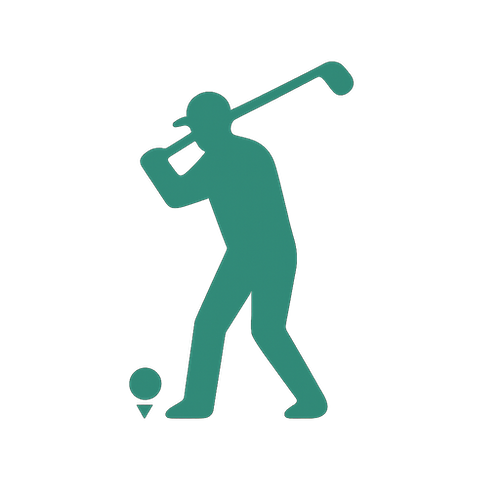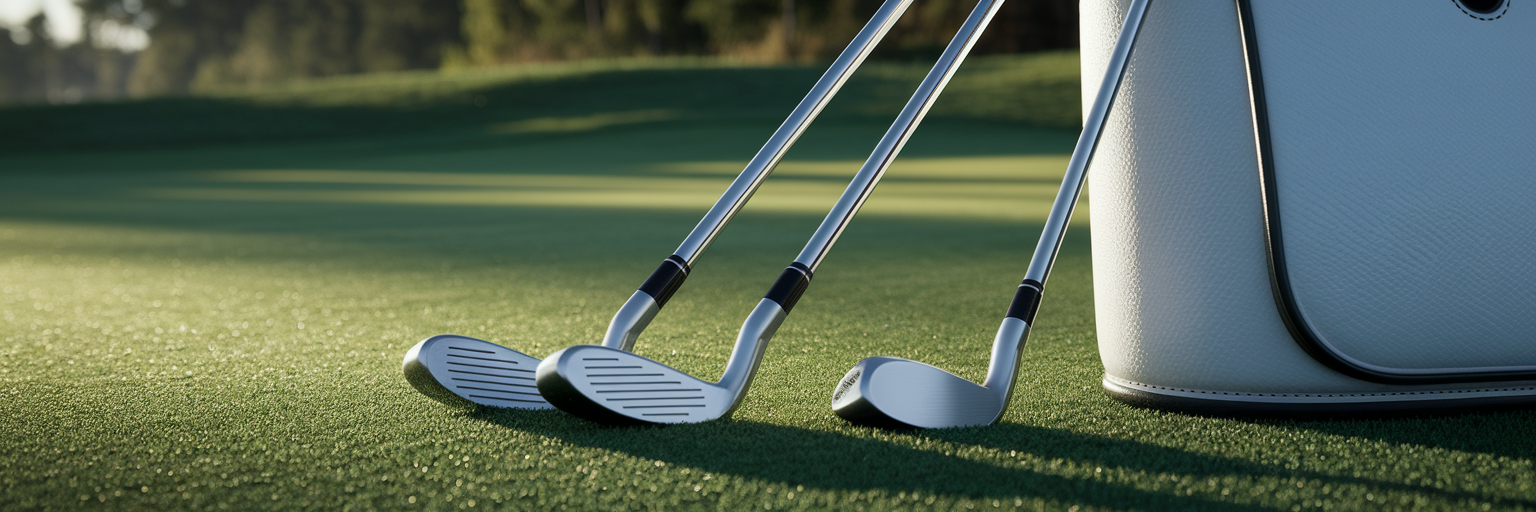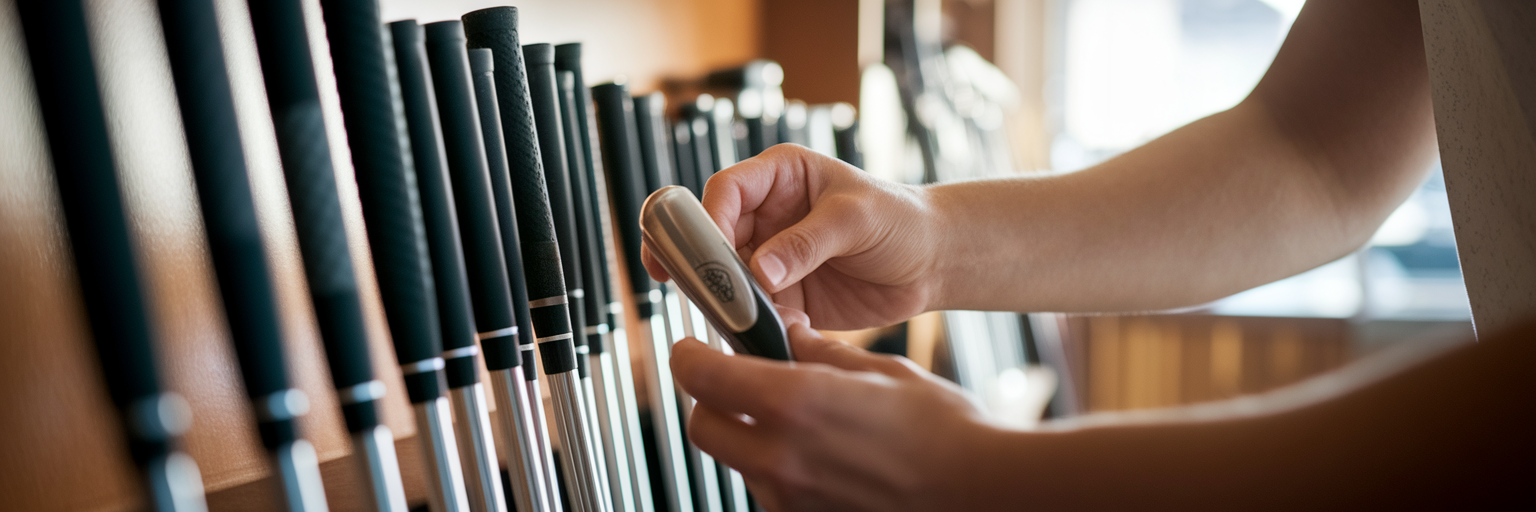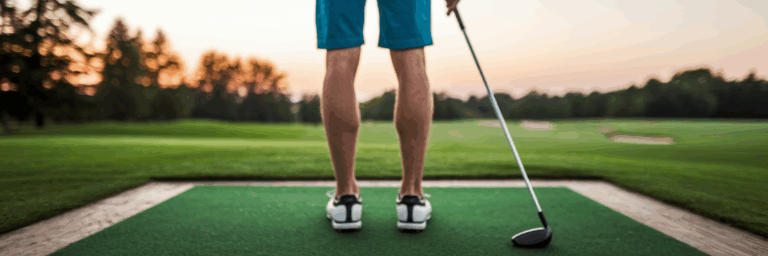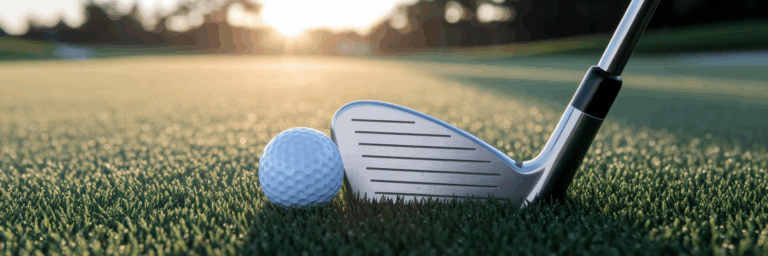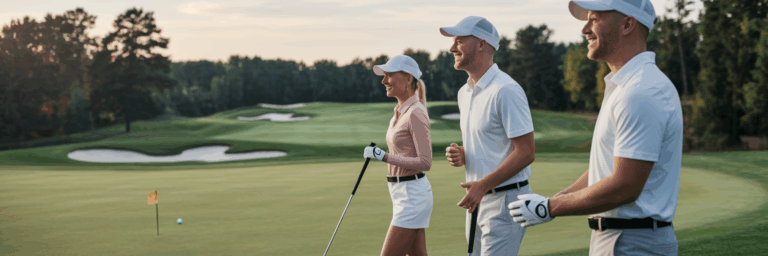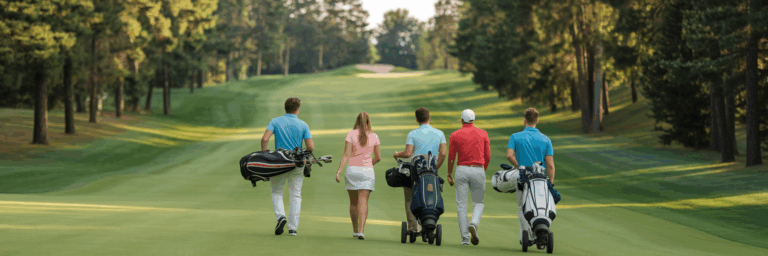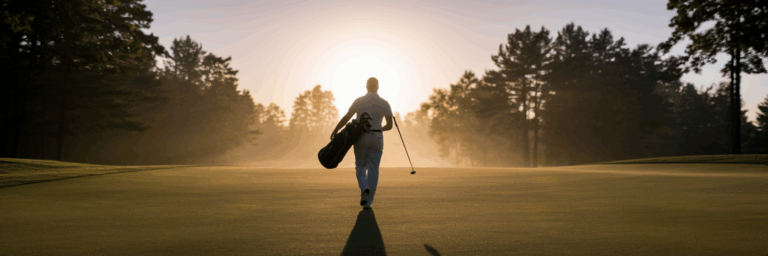Wie man die richtige Golfausrüstung für Anfänger auswählt
Starten Sie Ihre Golfreise mit Zuversicht
Walking into a golf shop for the first time can feel like stepping into a different world. A wall of shiny, numbered clubs stares back, and it is easy to feel overwhelmed. The good news is you do not need a full, professional set of clubs to get started. In fact, starting with less is often better. The goal is to build your confidence, not your confusion.
This guide is built on a simple philosophy: a few essential, forgiving clubs are all a beginner needs to learn the fundamentals. By focusing on your swing, posture, and grip instead of which of the fourteen clubs to pull from the bag, you make the game more enjoyable from your very first day. We will demystify the selection process for beginner golf equipment, offering smart, budget-friendly advice.
Think of this as your first lesson. Understanding the basics of your gear is a crucial step in learning wie man Golf spielt effectively and feeling comfortable as you step onto the driving range or course.
The Essential Clubs for Your First Golf Bag
When you ask, "what golf clubs do I need?" the answer is simpler than you think. Forget the 14-club sets you see the pros carry on television. A beginner thrives with a focused, minimalist set of five to seven clubs. This approach helps you learn the specific job of each club without getting lost in too many options. Many brands offer "boxed sets" or "beginner sets," which are convenient, all-in-one packages designed with forgiveness in mind, making choosing a beginner golf set much easier.
This golf clubs for beginners guide focuses on the essentials. Your first bag should include:
- Fahrer: This is the club with the largest head, designed for hitting the ball the farthest distance from the tee box at the start of a hole.
- Fairway Wood or Hybrid: A versatile club for long shots from the fairway grass. Many beginners find hybrids easier to hit than long irons. A hybrid looks like a small wood but acts like an iron, helping get the ball airborne more easily.
- A Couple of Irons (e.g., 6-iron and 8-iron): These are your go-to clubs for mid-range shots toward the green. Having two different irons helps you learn how loft affects distance.
- Sand Wedge: As the name suggests, this club is specifically designed with a heavy, angled face to help you hit the ball out of sand bunkers. It is also great for short, high chip shots around the green.
- Putter: This is the club you will use on the green, the short-grass area around the hole. Its flat face is designed to roll the ball smoothly toward the cup.
With these clubs, you have a tool for every key situation you will face on the course. You can handle long drives, approach shots, tricky situations, and putting, all while building a solid foundation for your game.
Key Club Features That Help Beginners
Now that you know which clubs to look for, let's discuss the features that make them "forgiving." Forgiveness in golf means the club is designed to help you get a decent result even when your swing is not perfect. It is all about building confidence with every shot.
First, consider the shaft flex. This refers to how much the shaft of the club bends during your swing. For players with slower swing speeds, which includes most beginners, a more flexible shaft (labeled "regular" or "soft/senior") is ideal. Think of it like a fishing rod; a flexible rod helps you cast the line further with less effort. A flexible shaft does the same for your golf ball, helping you generate more power.
Next is club length. Using clubs that are too long or too short can negatively affect your posture and make it difficult to develop a consistent swing. It is like trying to write with a pen that is the wrong size; your form suffers. While you do not need a professional fitting, it is a great idea to visit a local golf shop for a basic measurement. They can quickly check your height and wrist-to-floor distance to ensure your chosen beginner golf equipment fits your body.
Finally, look for clubs with a larger clubhead and perimeter weighting. A bigger clubhead creates a larger "sweet spot," making it easier to make good contact. Perimeter weighting means the weight is distributed around the edges of the clubhead, which helps keep the club stable on off-center hits. This feature makes your shots fly straighter, even when you miss the center of the face.
New Boxed Sets vs. Second-Hand Clubs
One of the biggest decisions when choosing a beginner golf set is whether to buy new or second-hand. Both are excellent options, and the right choice depends on your budget and preferences. A new boxed set offers the convenience of an all-in-one purchase with modern, forgiving technology. Second-hand clubs, on the other hand, can offer significant cost savings.
| Faktor | New Boxed Set | Second-Hand Clubs |
|---|---|---|
| Cost | Higher initial investment | Significant cost savings |
| Technology | Modern, forgiving technology | May have slightly older technology |
| Condition & Consistency | Brand new, consistent across all clubs | Variable condition, requires inspection |
| Bequemlichkeit | All-in-one purchase with a matching bag | Requires searching for individual clubs |
If you opt for second-hand clubs, a quick inspection is essential. First, check the grips. If they are slick, cracked, or worn down, they will need to be replaced, which adds to the cost. Next, inspect the club faces for deep dents or worn-out grooves, as this can affect how the ball flies. Finally, ensure the shafts are straight and free of dents. A little bit of homework can help you find a fantastic used set that serves you well as you learn the game.
Beyond the Clubs: Essential Golf Accessories
Your equipment checklist does not end with clubs. A few essential golf accessories for beginners can significantly improve your comfort, preparedness, and enjoyment on the course. These small investments make a big difference.
- Golf Balls: As a beginner, you will lose balls. It is a normal part of the learning process. Start with affordable, budget-friendly balls. There is no need to invest in expensive, high-performance models until your game is more consistent.
- Golf Shoes: Stability is crucial for a good golf swing, and regular trainers do not provide enough grip. We recommend spikeless golf shoes. They offer excellent traction on the course and are versatile enough to be worn comfortably in the clubhouse or on your way home.
- Golf Bag: A lightweight stand bag is the perfect choice for a beginner. Its built-in legs make it easy to set down on the driving range or the course, and it is light enough to carry if you decide to walk instead of using a golf cart.
- Helpful Extras: Do not forget the small things. A Golfhandschuh provides a secure grip, especially in warm weather. Abschläge are necessary for hitting your driver. A ball marker is used to mark your ball's position on the green. These items complete your setup and make you feel like a prepared golfer.
Your First Step Onto the Course
Das Recht beginner golf equipment is not about having the most expensive gear; it is about having the right tools for learning. Your first set should be simple, forgiving, and fit your budget. Think of it as your starter kit for a new adventure. If you can, test a few clubs at a local driving range or golf shop to see what feels comfortable.
Never be afraid to ask for advice from golf professionals or more experienced players. The golf community is generally welcoming to newcomers. Remember, the ultimate goal is to have fun, enjoy the process, and build a lifelong love for the game. Armed with this knowledge, you are ready to take your first confident step in your journey of learning wie man Golf spielt.
